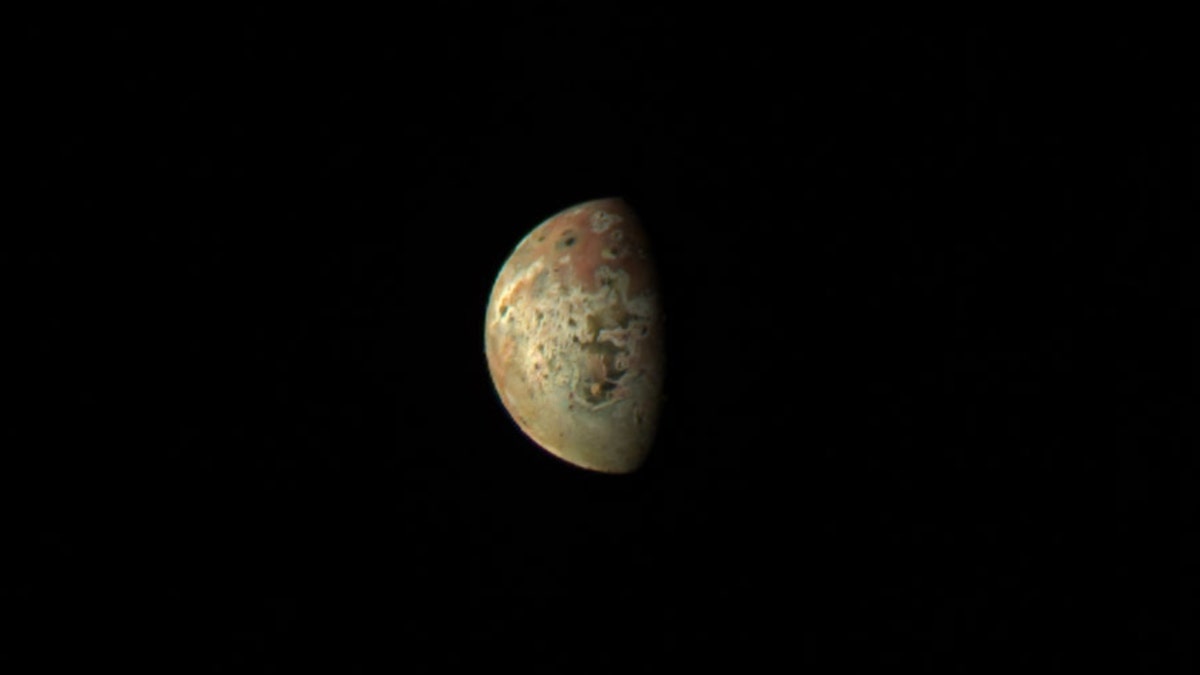Jupiter's 'dramatic' features from NASA's Juno mission wow the internet
NASA's Juno mission reveals Jupiter's 'dramatic' features
NASA's Juno spacecraft is slated to fly by Jupiter's volcanic moon Io Tuesday.
It will be the closest flyby to date, at an altitude of around 22,060 miles.
The agency said it will pass the gas giant soon after.
Juno has performed more than 50 flybys of Jupiter and flown more than 510 million miles. It arrived at Jupiter July 4, 2016, with the first science flyby occurring 53 days later.
NASA'S PERSEVERANCE MARS ROVER CAPTURES IMAGES OF WHAT MAY HAVEN BEEN A WILD RIVER

En route to the icy worlds inhabiting the outer regions of our solar system, NASA’s New Horizons spacecraft zipped past Jupiter, catching Io, the planet’s third-largest moon, enduring a volcanic explosion. (NASA's Goddard Space Flight Center Cover image courtesy of NASA/JPL/University of Arizona)
Now in the third year of its extended mission to look at the interior of Jupiter, Juno has also collected data during close encounters with three of Jupiter's four Galilean moons. Those include the icy worlds of Europa and Ganymede and the fiery Io.
Lo is slightly larger than Earth's moon and is constantly stretched and squeezed by the gravitational pull of Jupiter and the other Galilean moons.
Juno will also explore the ring system where some of Jupiter's inner moons are located.

The volcano-pocked surface of Jupiter’s moon Io was captured in infrared by the Juno spacecraft’s Jovian Infrared Auroral Mapper (JIRAM) imager as it flew by at a distance of about 50,000 miles (80,000 kilometers) July 5, 2022. Brighter spots indicate higher temperatures in this image. (Image data: NASA/JPL-Caltech/SwRI/ASI/INAF/JIRAM)
SOUTHERN CALIFORNIA STARTUP VAST ANNOUNCES PLANS TO LAUNCH WORLD'S FIRST COMMERCIAL SPACE STATION
"Lo is the most volcanic celestial body that we know of in our solar system," Scott Bolton, Juno principal investigator, explained. "By observing it over time on multiple passes, we can watch how the volcanoes vary – how often they erupt, how bright and hot they are, whether they are linked to a group or solo and if the shape of the lava flow changes."

This JunoCam image of the Jovian moon Io was collected during Juno’s flyby of the moon March 1, 2023. At the time of closest approach, Juno was about 32,000 miles (51,500 kilometers) away from Io. (NASA/JPL-Caltech/SwRI/MSSS Image processing: Kevin M. Gill (CC BY))
In addition to its visible light imager JunoCam, the spacecraft’s JIRAM (Jovian InfraRed Auroral Mapper), SRU (Stellar Reference Unit) and MWR (Microwave Radiometer) will be studying Io’s volcanoes and how volcanic eruptions interact with Jupiter’s powerful magnetosphere and auroras.
CLICK HERE TO GET THE FOX NEWS APP
"We are entering into another amazing part of Juno’s mission as we get closer and closer to Io with successive orbits. This 51st orbit will provide our closest look yet at this tortured moon," he noted. "Our upcoming flybys in July and October will bring us even closer, leading up to our twin flyby encounters with Io in December of this year and February of next year, when we fly within 1,500 kilometers of its surface."


